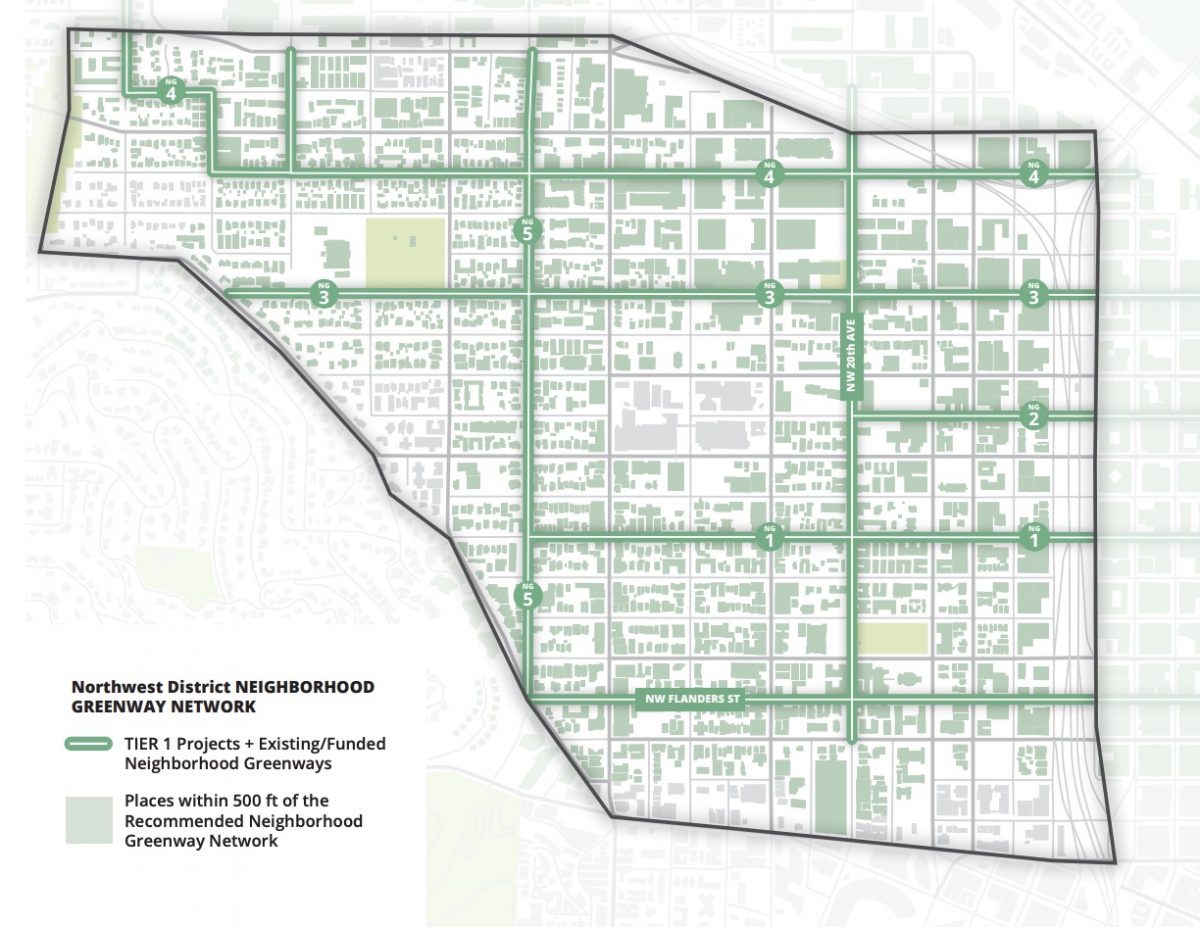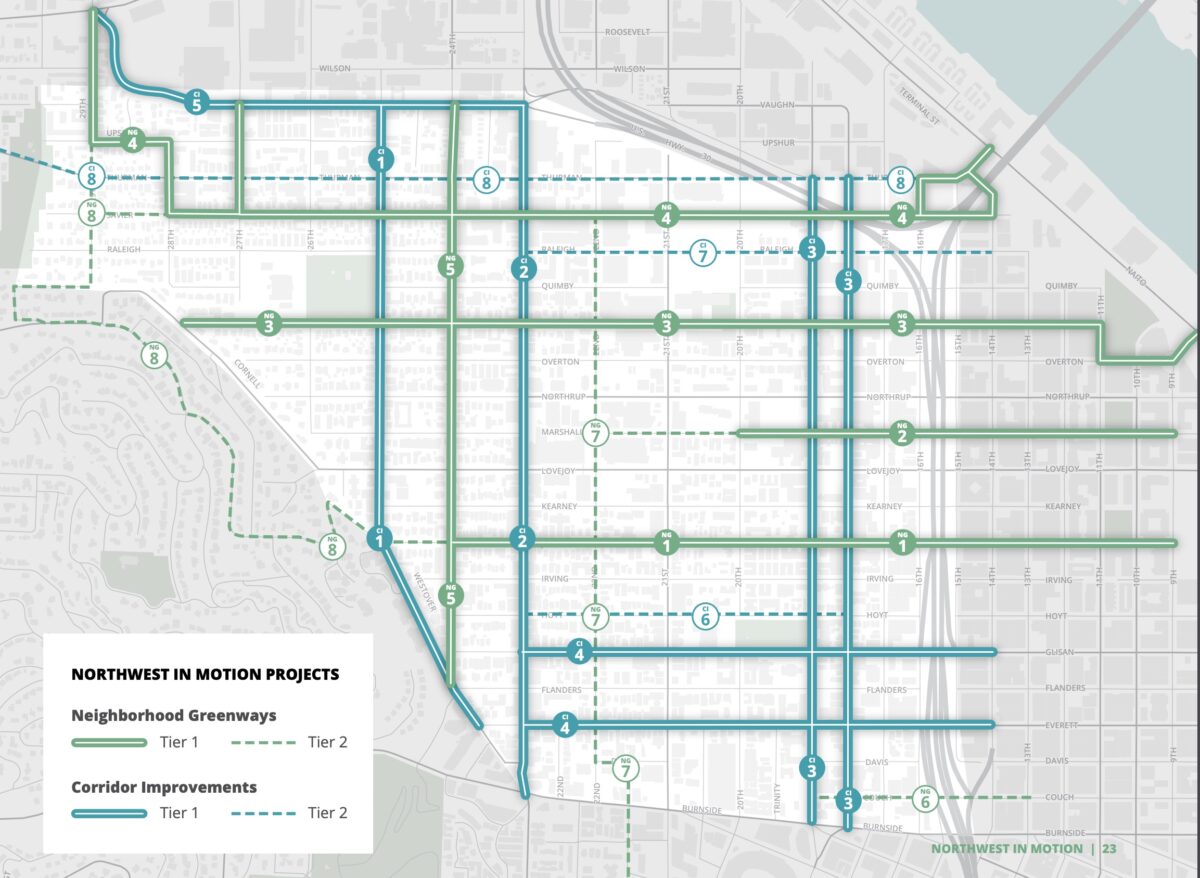
(Map from NW in Motion Plan, PBOT)
The Northwest in Motion Plan is done. After a two-year process to identify and prioritize shovel-ready projects that could give a major boost to biking, walking and transit use, PBOT is ready to take the plan to City Council and start breaking ground.

And unlike other plans, PBOT believes this list of projects has the feasibility and funding to get built right away.
There are many reasons to be bullish about biking in northwest. People who live there are nearly four times more likely to not own a car than the citywide average (38% to 10% respectively) and 38% of all trips made by automobile are less than three miles long — a very doable distance by bike. PBOT sees a glaring lack of connectivity and safe streets infrastructure in this part of town, which is probably why it has only 8% bicycle mode share while other inner neighborhoods in north/northeast and southeast Portland have 14%. Biking’s inherent affordability compared to driving and transit should also be appealing to northwest residents, given that households in the area this plan focuses on have significantly lower average annual household incomes compared to the rest of the city ($48,000 and $64,000 respectively).
PBOT’s strategy to move more people more safely with fewer cars, is to develop backstreets into “neighborhood greenways” and update infrastructure on more prominent corridors so that people on foot and bike feel more comfortable. Here are some of the renderings:
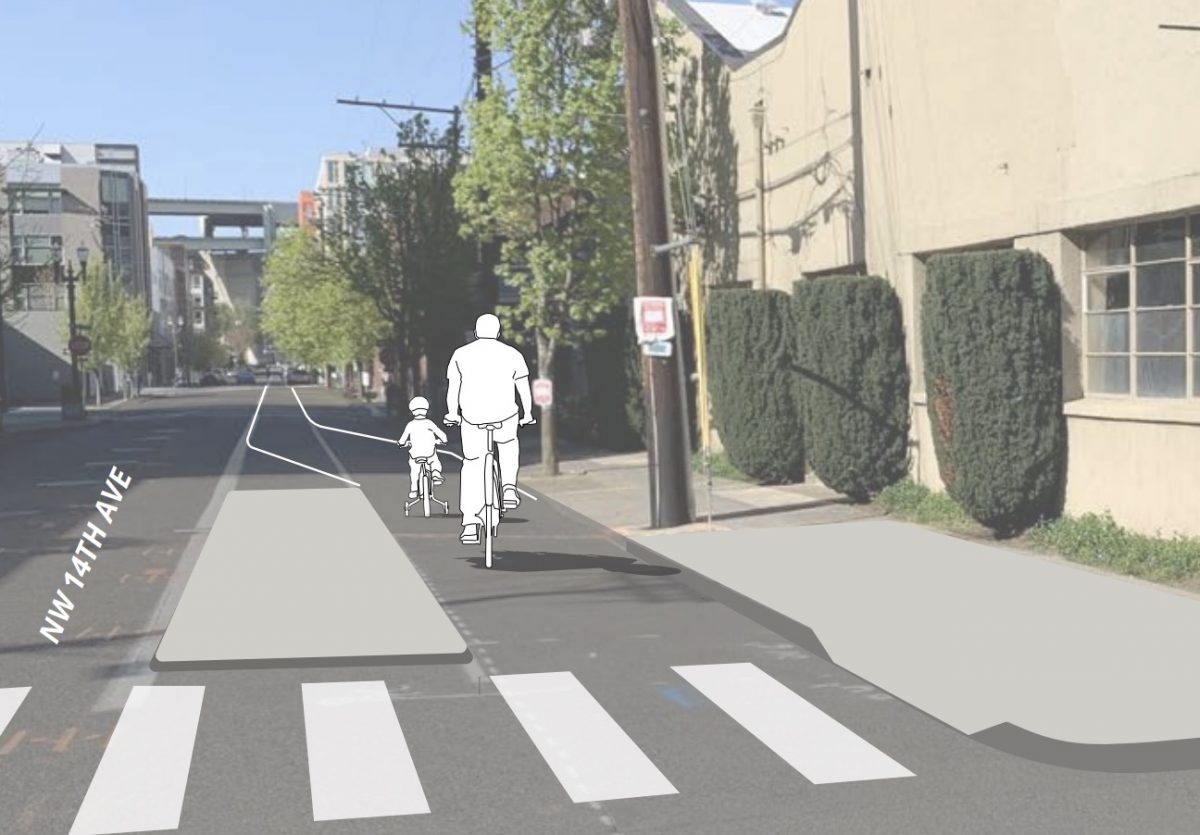

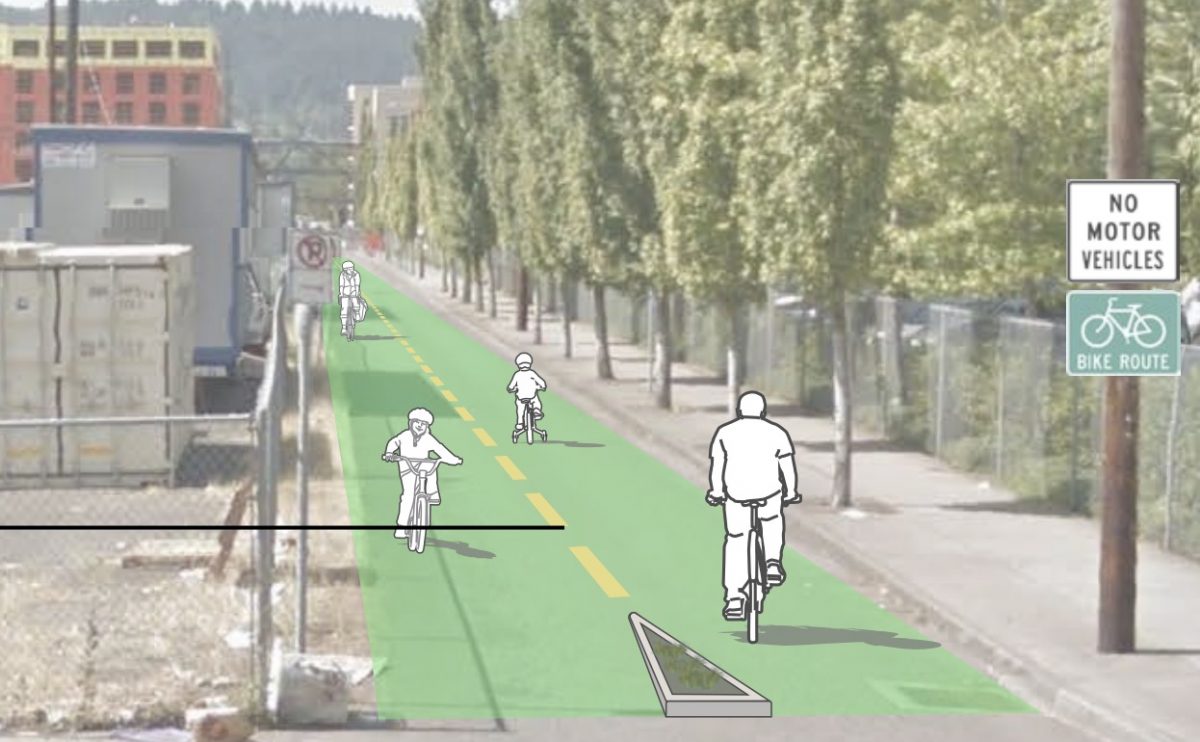

They’ve broken down the project list to two tiers. Tier 1 includes: new neighborhood greenways on Johnson, Marshall, Pettygrove/Overton, Savier and 24th; and “corridor improvements” on 25th/Westover, 23rd, 18th/19th, Everett/Glisan and Vaughn. Tier 2 includes: new neighborhood greenways on Couch, 22nd/Marshall, and Westover/Macleay Park; and “corridor improvements” on Hoyt, Raleigh, and Thurman.
Advertisement
Tier 1 is where the action is. These are the projects PBOT says have a “high level of readiness” and can be fully built out within the next five years. Once the Tier 1 greenways are built, PBOT says nearly all residents and businesses in the focus area will be within 500-feet of a low-stress bikeway (see graphic below).
How will they reduce the stress of biking and walking in northwest? One major tool will be diversion — keeping drivers off certain streets and funneling them onto others. PBOT’s diversion strategy will be to install a series of interim diverters on the edges of the focus area and then monitor traffic levels for one year. If traffic falls within adopted levels of a low-stress street (1,000 of fewer cars per day), those diverters will be made permanent. If those diverters don’t work, they’ll look at more pronounced measures on neighborhood streets on a case-by-case basis.

The big fish in the sea of PBOT’s project list is NW 23rd Avenue, northwest Portland’s main street. PBOT speaks about 23rd in visionary terms in this plan, saying they have “a unique opportunity to reimagine the main street typology and include a host of streetscape, urban design, and placemaking opportunities.” “The street is more of a ‘place’ than a ‘corridor'” the plan goes on to say. The only problem is PBOT estimates their vision for the street would cost $10 million because of the need for new pavement and a major traffic signal upgrade. That’s more than all the other nine Tier 1 projects combined.
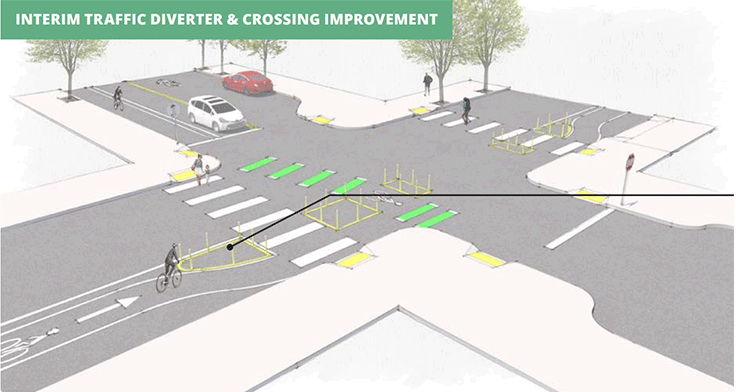
(Animation by BikePortland)
The good news is PBOT is confident those nine other projects can be funded and built. Here’s a snip from the plan:
“Tier 1 Projects consist of relatively low-cost capital improvements such as signage and striping, speed bumps, curb extensions, median islands, and modifications to existing signals, that can be fully designed and constructed in the near term using available resources. Planning-level cost estimates were prepared using best available costs of similar past projects, and even with a 50% contingency added to the construction costs to cover soft and unanticipated costs, it is calculated that nine projects add up to less than $5 million. Since Northwest in Motion is meant to be a five-year implementation strategy, this results in a funding need of roughly $1,000,000 per year for these projects. A combination of parking revenue, system development charges, and general transportation revenue will be enough to fund this set of projects.”
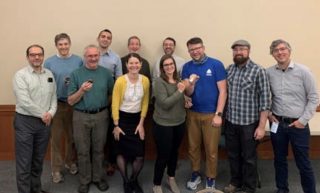
(Photo: PBOT)
$1 million a year sounds like a bargain for making significant steps in cleaner, healthier, more efficient, and safer mobility options in northwest. With biking likely to absorb former transit trips due to Covid-19 concerns, we need to act fast to make our streets cycling-compliant. This plan can help us get there.
If you’d like to testify on this plan at City Council, it’s scheduled for a public hearing at 2:00 pm on Thursday, July 23rd. Download the plan and learn more at NorthwestInMotion.com.
UPDATE, 5:55 pm on 6/25: In very related news, PBOT announced today they’ve finally broken ground on the Flanders Crossing Bridge! This is the lynchpin in the long-awaited Flanders Neighborhood Greenway. Read all about it via the official announcement.
— Jonathan Maus: (503) 706-8804, @jonathan_maus on Twitter and jonathan@bikeportland.org
— Get our headlines delivered to your inbox.
— Support this independent community media outlet with a one-time contribution or monthly subscription.


